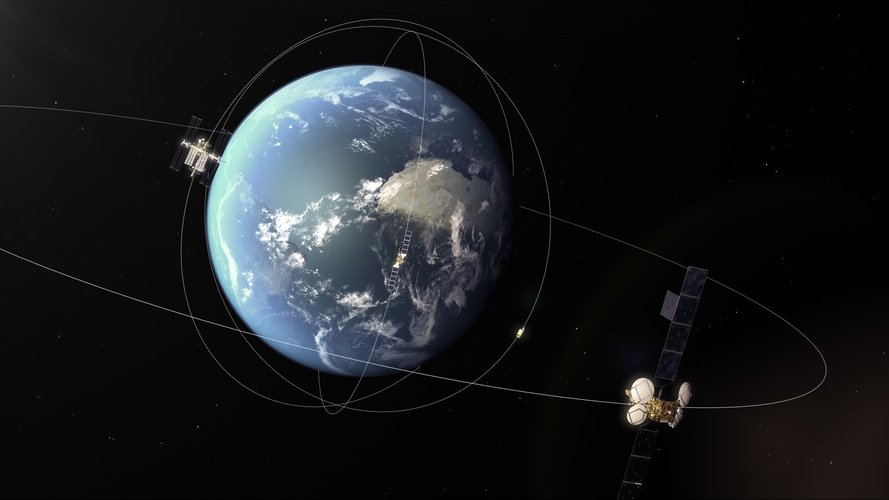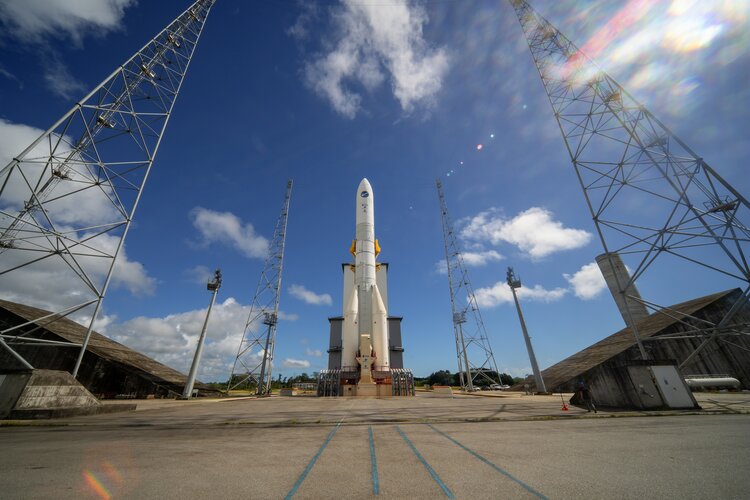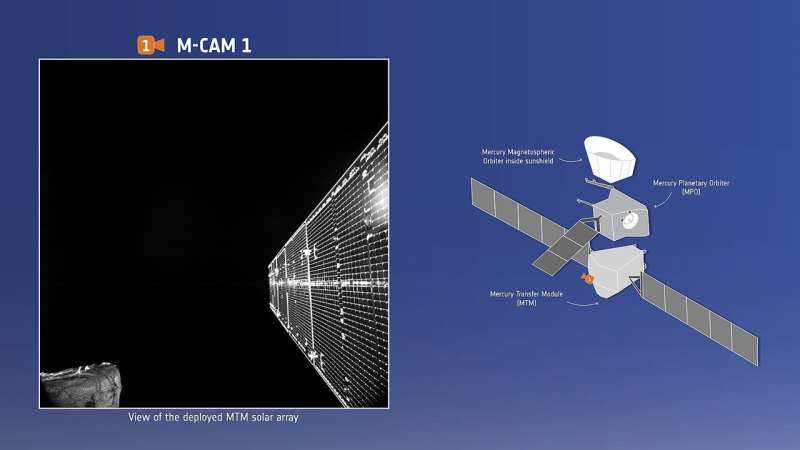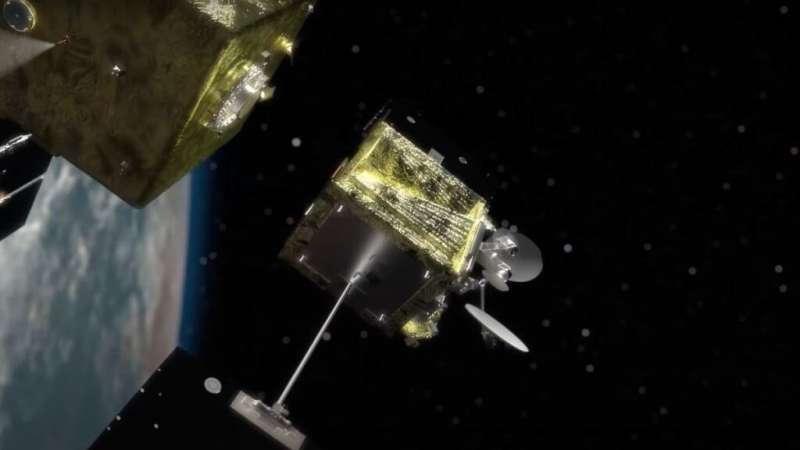Paris Air Show 2023 in pictures - Day 5
Friday, 23 June 2023 09:56
After four intensive days of panels and sessions dedicated to professionals and trade visitors, starting today ESA/CNES pavilion will be hosting a variety of events dedicated to students and general public.
Click the link here to view the full programme of events being held in the ESA-CNES shared area. The public days will take place from Friday to Sunday 23, 24 and 25 June.
Paris Air Show 2023 in pictures - Public days
Friday, 23 June 2023 09:56
After four intensive days of panels and sessions dedicated to professionals and trade visitors, starting today ESA/CNES pavilion will be hosting a variety of events dedicated to students and general public.
Click the link here to view the full programme of events being held in the ESA-CNES shared area. The public days will take place from Friday to Sunday 23, 24 and 25 June.
Safran, Terran Orbital to explore joint production of satellite propulsion systems
Friday, 23 June 2023 09:30
Satellite manufacturer Terran Orbital has signed an agreement with French aerospace giant Safran to explore U.S.
U.S. and India to expand spaceflight cooperation
Friday, 23 June 2023 08:41
The governments of the United States and India have agreed to work more closely together in spaceflight, with India signing the Artemis Accords and the two countries planning for a joint mission of some kind to the International Space Station.
Earth from Space: Tashkent, Uzbekistan
Friday, 23 June 2023 07:00 Image:
The Copernicus Sentinel-2 mission takes us over Tashkent, the capital city of Uzbekistan.
Image:
The Copernicus Sentinel-2 mission takes us over Tashkent, the capital city of Uzbekistan. ESA tests multi-orbit connectivity
Friday, 23 June 2023 06:19
Engineers have communicated via video link using connectivity delivered by 5G terrestrial networks and a combination of satellites in different orbits, as part of an experiment led by ESA’s 5G/6G Hub.
First view of Ariane 6 on launchpad
Friday, 23 June 2023 06:00
ESA’s new Ariane 6 launch system is being prepared for a round of engine fire tests – with removal of the mobile building that protects the rocket while it sits on the launch pad at Europe’s Spaceport in French Guiana.
What the wreck of the Titan portends for commercial spaceflight
Thursday, 22 June 2023 21:46
With the loss of the submersible Titan and her five passengers garnering round-the-clock media attention, those working in the emergent private space travel industry should pay close attention
Video: BepiColombo's third Mercury flyby
Thursday, 22 June 2023 17:46
Watch Mercury appear from the shadows as the ESA/JAXA BepiColombo spacecraft sped by the planet's night side during its 19 June 2023 close flyby, and enjoy a special flyover of geologically rich terrain.
In the first part of the movie, composed of 217 images captured by BepiColombo's monitoring camera M-CAM 3, the planet's illuminated side quickly appears in the spacecraft's field of view, showing off a bounty of geological features on its surface. The planet's terminator—the divide between day and night—becomes more distinctive from afar, adding to the beauty of the image sequence. At one point Mercury momentarily appears to hang between the spacecraft's body and antenna before the spacecraft speeds away.
The image sequence starts from 19:46:25 UTC on 19 June 2023, at an altitude of 1,789 km above the planet's surface, and ends at 20:34:25 UTC on 20 June 2023, when BepiColombo was 331,755 km away.
A new mission will grab dead satellites and push them into the atmosphere to burn up
Thursday, 22 June 2023 17:32
Plenty of news stories have focused on the danger posed by Kessler syndrome. In this condition, space is made inaccessible by a cloud of debris surrounding our planet that would destroy any further attempts to get into orbit. Therefore, plenty of companies have sprung up to take care of the problem, from blasting derelict satellites with lasers to helping to refuel them—lots of business models have been created to capture this opportunity.
One of the farthest along is Astroscale. This British start-up is tackling the problem with one of the more conventional techniques—linking up with an existing satellite to deorbit it. And recently, they released a promotional video for their new project—the ELSA-M.
ELSA-M, which stands for End of Life Services by Astroscale-Multiple, is designed to couple with an existing satellite, force it into a lower orbit, and make it reenter more quickly. It will be the first satellite to boost itself up to another orbit for a second rendezvous and deorbit that second satellite as well.
SpiderOak demonstrates cybersecurity software on orbit
Thursday, 22 June 2023 12:15
Cybersecurity specialist SpiderOak reported successful on-orbit testing June 22 of its OrbitSecure software running on a Ball Aerospace payload.
Top Secret NRO Spy Satellite launched on ULA's Delta IV Heavy Penultimate Flight
Thursday, 22 June 2023 10:42 An issue with a ground systems pneumatic valve caused a one-day delay of ULA's first launch of 2023; the launch was originally scheduled for June 21.
United Launch Alliance's (ULA) second-to-last flight of its Delta IV Heavy rocket lit the Florida Space Coast sky on the NROL-68 mission to haul a classified payload for the U.S. government's spy satellite agency, the National Reconnaissance
An issue with a ground systems pneumatic valve caused a one-day delay of ULA's first launch of 2023; the launch was originally scheduled for June 21.
United Launch Alliance's (ULA) second-to-last flight of its Delta IV Heavy rocket lit the Florida Space Coast sky on the NROL-68 mission to haul a classified payload for the U.S. government's spy satellite agency, the National Reconnaissance SpaceLogistics continues satellite life-extension work with latest sale
Thursday, 22 June 2023 10:42 Northrop Grumman Corporation's (NYSE: NOC) SpaceLogistics has sold its third Mission Extension Pod (MEP), a propulsion "jet pack" that extends the life of legacy satellites, allowing them to operate longer and more profitably.
Under a purchase agreement with Intelsat, SpaceLogistics' Mission Robotic Vehicle (MRV), a servicing spacecraft equipped with robotic arms, will install the jet pack
Northrop Grumman Corporation's (NYSE: NOC) SpaceLogistics has sold its third Mission Extension Pod (MEP), a propulsion "jet pack" that extends the life of legacy satellites, allowing them to operate longer and more profitably.
Under a purchase agreement with Intelsat, SpaceLogistics' Mission Robotic Vehicle (MRV), a servicing spacecraft equipped with robotic arms, will install the jet pack Space exploration company brings high-tech laser lab to the ocean floor
Thursday, 22 June 2023 10:42 On Friday, May 19, 2023, Impossible Sensing, along with a team of scientists and engineers from SETI Institute, NASA JPL, University of Washington's Applied Physics Laboratory and other institutions onboard Ocean Exploration Trust's Exploration Vessel Nautilus expedition, successfully launched InVADER Mission's Laser Divebot into the deep waters surrounding Kingman Reef and Palmyra Atoll. This e
On Friday, May 19, 2023, Impossible Sensing, along with a team of scientists and engineers from SETI Institute, NASA JPL, University of Washington's Applied Physics Laboratory and other institutions onboard Ocean Exploration Trust's Exploration Vessel Nautilus expedition, successfully launched InVADER Mission's Laser Divebot into the deep waters surrounding Kingman Reef and Palmyra Atoll. This e 

 Image:
W-band on the run
Image:
W-band on the run